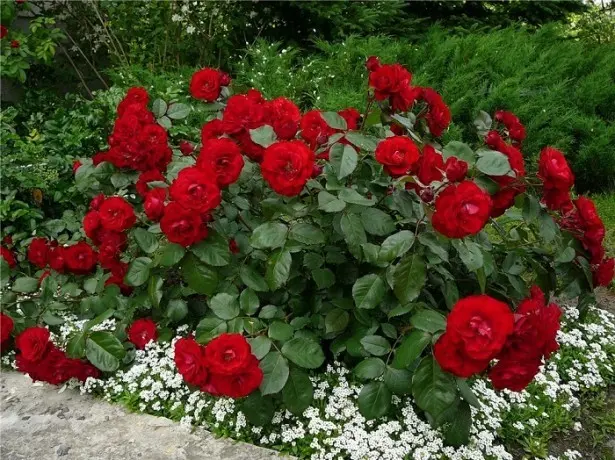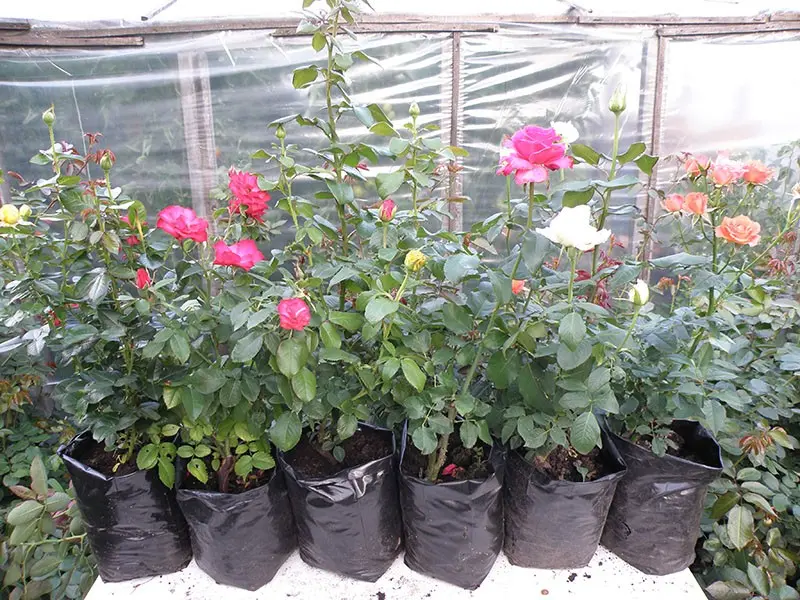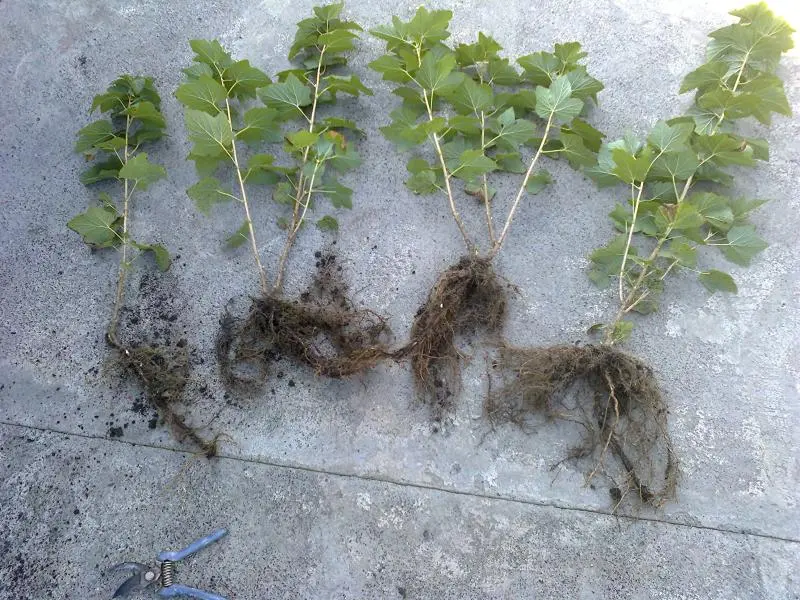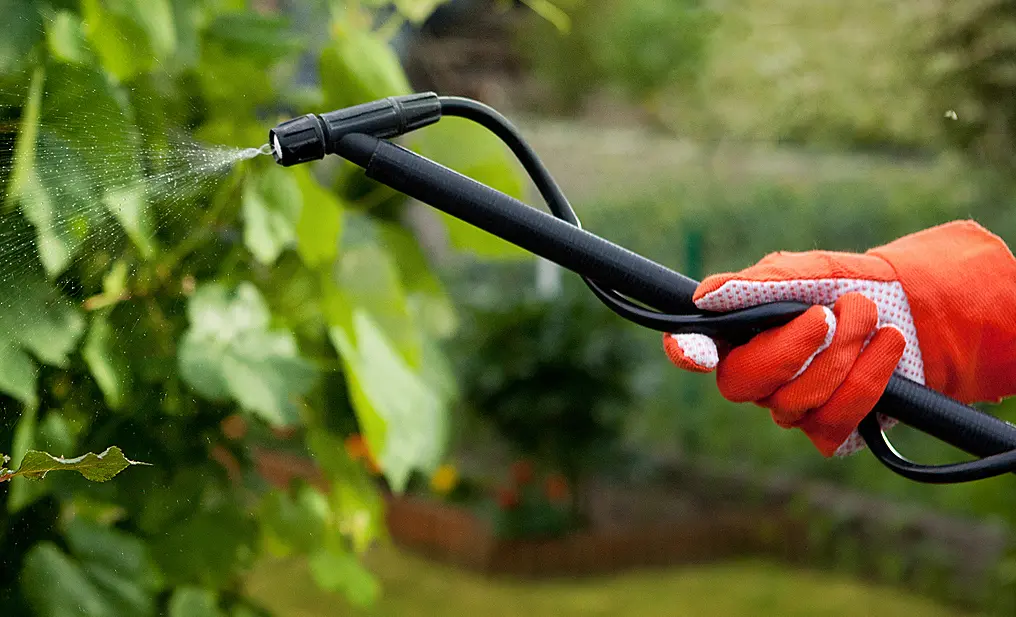Contents
Rose and wild rose are plants of the same family of roses. Of course, the wild rose is not as decorative as a rose, but it is much healthier and hardier, which allows it to be used as a rootstock for grafting roses. Such flowers inherit high resistance to harsh climatic conditions from wild rose, but this mixing has a downside – over time, a grafted rose can turn back into a wild rose. Why does this happen and what to do in case of rebirth of the bush? We will try to deal with these questions in the article.
Why the rose is reborn
It is known that a rose can be propagated in several vegetative ways, but only those who have tried to put it into practice know how difficult it is in our climate to grow it from a cutting or other vegetative material. Even if rooting is successful, own-rooted plants may not withstand the harsh winter of the middle zone and the North. Therefore, grafting cultivars onto wild rose rootstock for such regions is sometimes the only way to grow these amazing flowers.
Any variety can be grafted onto rose hips: tea hybrids, standard, climbing and other varieties of roses. The grafting process itself is quite simple. A small cutting with one or more buds is taken, grafted onto a young rosehip bush, and when it takes root, the rosehip stems are cut off above the grafting site. But at the same time, for a cultivated rose grown in this way, there will always be a danger of rebirth. There are several reasons why a rose turns into a wild rose:
- The first and most banal reason is the acquisition of a seedling, which has rosehip buds in the lower part (under the grafting site). It can be difficult for a novice florist to choose a quality seedling, and some unscrupulous sellers try to sell such specimens to inexperienced people. The consequences of the purchase are rather unpleasant: along with the cultivated shoots, “wild” ones will also grow. Soon this growth will take all the nutrients, and the rose will have nothing left but to die and stop flowering from a lack of nutrition.

- The next reason is the violation of growing technology. In a good seedling, the grafting site (the thickening from which the shoots of the rose extend) is located immediately above the roots. This place must be protected from any negative factors. When planting, the grafting site should be deepened into the soil by 7-10 cm, and after planting, also spud. If this is not done, the seedling will grow weak, and since the wild rose is stronger than the rose, then “wild” will soon begin to grow in place of the cultivated shoots.
- Low survival rate. A rose can get sick, freeze or die from excessive moisture at any time, and a more hardy wild rose will put up its shoots in the place of the dead.
A rose does not turn into a wild rose immediately, so not every grower has time to notice that important moment when the “wild” growth began to displace the cultural one. The bush continues to be looked after, as usual, and what a surprise it is when, instead of luxurious buds, simple rosehip flowers appear. To prevent this from happening, you need to learn to recognize the first signs, and not let the rose turn into a wild rose.
Video “Reasons for Rebirth”
From the video you will learn why there is a rebirth from a rose into a dog rose.
First signs
Of course, there is nothing difficult in distinguishing an adult flowering wild rose from a rose. But how to distinguish the shoots when they just started to grow – after all, it is at this moment that you need to start the fight against the “wild” shoots. At the initial stage of growth, shoots can be distinguished by the following features:
- color – rose hips have green shoots regardless of the variety, and all shades of roses are reddish;
- thickness – the rose hips have thinner branches, while the roses have more powerful and thicker leafy ones;

- according to the leaves – the leaves of cultivated varieties are dark green, dense, glossy on top, at the wild rose – small, light green, rough or slightly pubescent;
- by thorns – on the shoots of roses, the thorns are large and rare, and on the wild rose – small and densely located.
These are the main signs that tell you how to distinguish rose hips from branches of a cultivated rose. You can also pay attention to the shape of the leaves, the number of simple leaves in one complex one, but as practice shows, this is possible only if you know exactly the varietal characteristics of your rose. Therefore, do not waste time, but it is better to start correcting the situation as early as possible.
How to prevent or correct the situation
The first thing you should always pay attention to is the quality of the seedlings. Do not buy plants in dubious places, but when buying, immediately inspect the seedling for the location of the grafting site, as well as the color of the stems. Remember that the shades of rose hips are green, and all shades of roses are reddish. Unfortunately, there are times when an inexperienced buyer is offered a rosehip seedling instead of a rose.
With a seedling that has already been planted, you need to be careful, because its “wildness” can begin unexpectedly. It is clear that it is better to prevent the degeneration of the bush than to solve this problem later.
The following measures will help to partially prevent the transformation of a rose seedling into a wild rose:
- regular moistening and loosening of the soil around the bush;
- removing weeds around the bush – do not allow weeds to take nutrients from the soil;

- regular inspections of the bush for the appearance of “wild” shoots;
- fertilizing with mineral mixtures.
If the bush nevertheless went into “wild” growth, it can be reanimated by such measures:
- carefully, so as not to damage the roots, dig the soil around the bush;
- gain access to the rose grafting site;
- to find the place of germination of wild rose overgrowth;
- gently break it or cut it off at the very base;
- smear the pruning sites with iodine or another disinfectant.
If such a problem has already appeared, then you need to cut out “wild” shoots regularly. Otherwise, they will grow very quickly, and the rose will begin to wither – first, the number of buds will decrease, then they will become small, and eventually the whole bush will stop blooming.
Further Care
A rose that is prone to “running wild” needs more thorough and special care. It is necessary to create all conditions for the bush to receive sufficient nutrition and not be subjected to any negative factors from the outside:
- make sure that weeds do not appear around the bush, and remove them in time;
- periodically loosen the soil in the near-trunk circle – loose earth passes moisture better and improves oxygen access to the roots;

- in early spring, carry out preventive treatment for diseases;
- at least 3 times during the season, feed the bushes with mineral fertilizers for flowers;
- mulch the soil around the bush with a thin layer of peat, compost – all roses are very fond of organic matter;
- water with settled or rain water – in hot weather 1-2 times / week, on cloudy days as needed;
- pruning in time: spring sanitary – before bud break, autumn – after flowering ends (September – early October).
For the winter, any rose in our latitudes needs to be covered. Before that, you need to remove all old, weak and damaged shoots under the root. Shorten the remaining young branches by a quarter or a third (depending on the variety).
Spud the roots by 20-30 cm, cover with dry foliage, sawdust or spruce branches. If there is not enough snow, you need to use additional covering material.
In the spring, after being released from shelter, the bushes are carefully inspected and sanitary pruned.
Video “Care”
From the video you will learn how to properly care for this shrub.
Author: Svetlana Galitsina
Loading…













